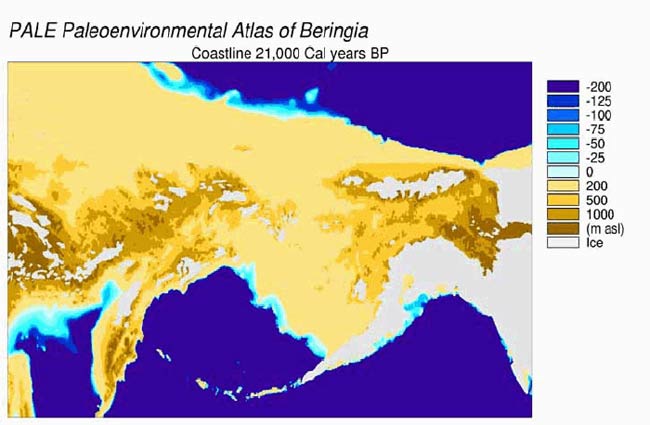First Americans All from Siberia, Study Confirms

Humans somehow made their way into the Americas from distant lands, but knowing precisely when and from where they made the journey are matters of heated scientific debate.
New genetic evidence, however, backs up a chilly northwestern arrival to North America from Siberia about 12,000 years ago, via a temporary land bridge spanning the Bering Strait. The findings further challenge an alternative idea that humans sprinkled in to both North and South America on open sea voyages 30,000 years in the past.
"We have reasonably clear genetic evidence that the most likely candidate for the source of Native American populations is somewhere in east Asia," said Noah Rosenberg, a genetic researcher at the University of Michigan Medical School.
Rosenberg explained that the evidence stems from two genetic trends between Siberian and Native American people: One, that genetic similarity between the peoples thins out the further south a native is sampled, and two, that a unique genetic mutation can be found only in Native American and Siberian ancestors.
"If there were a large number of migrations, and most of the source groups didn’t have the variant, then we would not see the widespread presence of the mutation in the Americas," he said.
Because the harmless genetic fluke is reliably found in the two populations, Rosenberg added that the first humans of the New World likely made a single migration—not in several waves as some alternative theories posit.
Rosenberg and his team sampled DNA from 50 populations from around the world and looked specifically at 678 unique genetic markers to investigate human arrival to North America. The technique allows them to glean information about long-dead ancestors of those tested.
Sign up for the Live Science daily newsletter now
Get the world’s most fascinating discoveries delivered straight to your inbox.
The scientists said genetic oddities in those genes are very fresh, which they take as a strong sign that humans migrated in a recent and single wave instead of arriving in several waves all across North and South America.
How they ventured south once traversing an icy northwestern passage, however, is another question. In Rosenberg and his colleagues' study, detailed in a recent edition of the journal PLoS Genetics, the scientists support the idea that humans migrated south along the coasts by boat rather than toughing it out on land.
"A migration route along the coast provides a slightly better fit with the pattern we see in genetic diversity," Rosenberg said.










